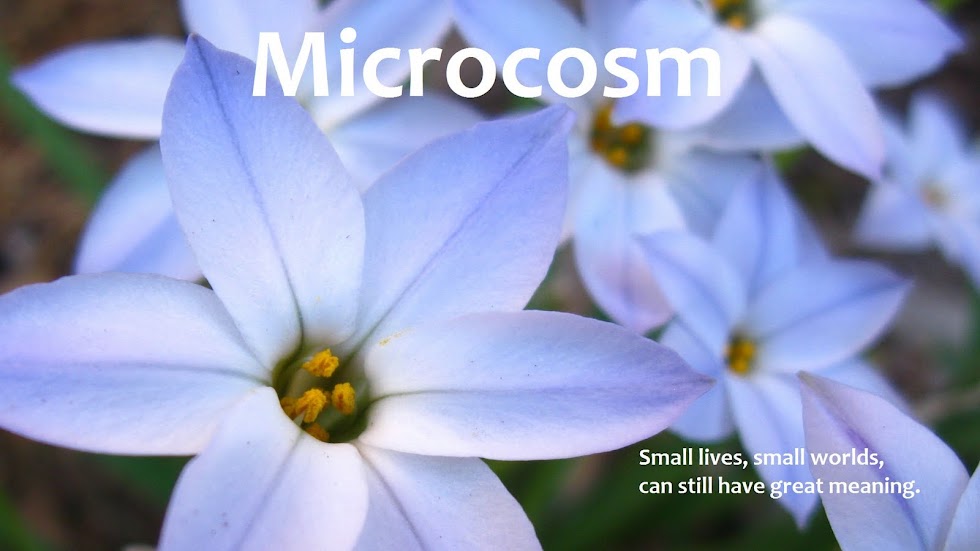Nothing with "nauseosus" in its name should smell so good. Even if the word does just mean "heavy-scented," it doesn't sound like it means anything pleasant, certainly nothing like the heady fragrance coming from the stand of rabbitbrush (Chrysothamnus nauseosus) on the far side of the parking lot.
The scent bypassed floral altogether and went straight for honey, for thick, musky ambrosia. No wonder the bees were so giddy—they must have felt as if half their work had already been done for them.
Like no other month, October (in the northern hemisphere, at any rate) seems to show every place in its best light. Just breathing the air or looking at the sky can be a sonnet-worthy experience. I always take a week of vacation around mid-month to make the most of the gorgeous sunlight and weather while they last, and try to spend every possible minute of it outside. Among the short day-trips I took this year was yet another excursion to Elena Gallegos Open Space park in the foothills on the edge of town.
 |
| Cholla, juniper, blue grama grass, and rabbitbrush |
I'd been looking forward to this visit for months, ever since the first time I drove up the gently curving, suburban road to the park and saw the roadway lined with rabbitbrush (or chamisa, as it's known here) from bottom to top. Like blue grama grass, rabbitbrush is one of the signature plants of western North America, growing from the panhandle of Texas west to the Sierras, from Mexico to Saskatchewan. I have loved it since early childhood—Dad used to call it "bunny bush," which for some reason sent my five-year-old self into endless fits of giggles. Its golden flowers are still among my favorite sights of autumn.
 |
| The sky is another. |
The park was as glorious as I'd hoped, at least where the rabbitbrush held sway. It's about the last of the high desert plants to bloom, so it had to hold the fort pretty well on its own. Here and there on my walk I saw a dyspeptic aster or two, and once a dull patch of mounding peppergrass, but nothing to keep the bees and butterflies satisfied. Instead all the pollinators descended on the rabbitbrush in droves, making the most of its flowers while they could.
 |
| A more or less cooperative variegated fritillary. |
I knew that rabbitbrush was an "opportunistic" plant, the kind that colonizes disturbed places. It's common along roadsides and ditches, and on open range-land it can indicate over-grazing.* For some reason I didn't expect that to translate into easy photographs, but it did, as the rabbitbrush was wonderfully thick in all the most accessible places—on the edge of the parking lot, beside the paths, near the occasional ramadas.
As thick as the stands of it were, though, they're not long-lasting. Rabbitbrush sends down deep taproots as well as lateral roots that allow it to take hold fast; they make it valuable for stabilizing the soil and beginning the process of rebuilding. But for some reason all those roots and the plant's general sturdiness are not enough to make it a particularly strong competitor. Once the next phase of succession begins, the rabbitbrush colonies will fade away. I can't believe I'm saying this with a straight face, but they really do have to make the most of the bad, disturbed, barren soil while they can.
I love thinking back over a day trip later that evening, letting memories bubble up. A few of them always stand out from the rest and become emblems of the day. In this case the "signature" of the walk was the fragrance, drawing in the bees and the butterflies (and, less usefully, me) that will help the rabbitbrush set seed. This winter, those seeds will drift on the wind to the next disturbed place (rabbitbrush: the Mary Poppins for unhappy soils), where a colony can start over again, and make another autumn day golden in time. Maybe in a subtler way, too, there was a kinship between the bees and the butterflies and the rabbitbrush and me that drew us together later in my mind—a sense of exuberance, of living it up.
We were all opportunists, making hay while the sun shone.
___________________________
* It's also a staple in xeriscape gardens and commercial
landscapes, and (for what it's worth) it is one of the all-time most
spectacular plants ever in a high wind.






















